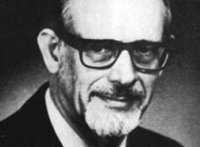On April 7, 1978, Steve Tom, NBC radio newsman, Chicago, and I were linked up by phone for an interview with a former Air Force Intelligence Officer, Major J.M. residing in Houma, Louisiana. Major J.M., I learned, shared some common grounds with me. He had also served in the 5th Air Force in the Pacific Theatre during World War D, and had been in several combat areas such as Leyte, Phillipine Island, where I had been assigned. The purpose of our call was to obtain first hand, the major's role in the retrieval of an alleged crashed UFO northwest of Roswell, New Mexico, in the summer of 1947. The debris of an apparent metallic aerial device, or craft, that had exploded in the air or crashed, was first made known by a sheep rancher who found fragments of metal and other material on his 8,000 acre property. When he informed the Air Force base in Roswell of his discovery, Major J.M. and aides were dispatched to the area for investigation. There he found many metal fragments and what appeared to be "parchment" strewn in a 1 square mile area. "The metal fragments," said the Major, "varied in size up to 6 inches in length, but were of the thickness of tinfoil. The fragments were unusual," he continued, "because they were of great strength. They could not be bent or broken, no matter what pressure we applied by hand."
The area was thoroughly checked, he said, but no fresh impact depressions in the sand were found. The area was not radioactive. The fragments, he added, were transported by a military carry-all to the air base in Roswell and from that point he was instructed by General Ramey to deliver the "hardware" to Ft. Worth, to be forwarded to Wright-Patterson Field for analysis. When the press learned of this retrieval operation, and wanted a story, Major J.M. stated, "To get them off my back I told them we were recovering a downed weather balloon." When the major was asked for his opinion as to the identification of the fragments he was certain they were not from a balloon, aircraft, or rocket. He said because of his technical background he was certain that the metal and "parchment" were not a part of any military aerial device known at that time.
Comment: The retrieval of "unusual" fragments in secrecy suggests they were a part of an unknown aerial device or craft. Manned, or not, the major did not know. If there were entities aboard no evidence was found. Had there been any bodies aboard they would have been destroyed in what appeared to be an aerial explosion. It is significant to note in this instance, the year 1947 — the year of the first great wave of UFO reports. Also the area of this retrieval was in the path of some of the green fireball phenomena observed from 1947 to 1948.
Leonard Stringfield (1920–1994) was an American UFO witness in 1945 and this became a ufologist. who had particular interest in crashed flying saucer stories.
From 1953 to 1957, he organized the "Civilian Research Interplanetary Flying Objects" (CRIFO) ufology organization and published its monthly bulletin, "Orbit". He wrote his first book on UFOs in 1957 and joined NICAP, befriending its Director Major Donald Keyhoe, ret. He joined the Mutual UFO Network (MUFON) in 1971, and was the state section director of southwest Ohio. In 1974 he became the PR man for the MUFON and served on its board of directors. He also was a regional investigator for the J. Allen Hynek Center for UFO Studies (CUFOS).
 Len Stringfield |
On July 8, 1947, the Press in the US and other countries had announced that the Army took possession of a "flying disc" near Roswell, NM. But the next day, the Army explained the debris were those of a weather balloon, and the incident was forgotten. There were some mentions in the Press and magazines later, including the weather balloon conclusion, and ufologists did not care for what appeared to be a closed case.
During the 1970s, the topic of "crashed saucers" did not interest many ufologists, to say the least, partly because the most publicized saucer crash story, in articles and books by Frank Scully in 1949 and 1950, had been exposed to be a fraud. Also, in 1974, Robert Carr issued repeated claims about a "recovery" of bodies of extraterrestrials and remains of their craft in Aztec (hundred miles from Roswell) in 1948, allegedly stored in secret by the US Government at "Hangar 18" at the Wright Patterson Air Force Base. Carr provided no verified evidence, but claimed President Gerald Ford would officially acknowledge this "in a few weeks". As this never occurred, "saucer crash" stories were viewed with high skepticism by most ufologists.
Stringfield was not convinced that this meant that all saucer crash stories must be frauds, and collected a number of statements made by people who generally wanted to remain anonymous and claimed to have witnessed first hand or heard about such incidents.
What he wrote here for the MUFON UFO Journal is a part of what he had presented as a speaker at the Ninth Annual MUFON Symposium in Dayton, Ohio, July, 1978, as "Retrievals of the Third Kind: A Case Study of Alleged UFOs and Occupants in Military Custody." It was one of the testimonies he had gathered, and he did not yet suspect this was the starting point of the now famous "Roswell incident".
"Major J.M." is of course Major Jesse Marcel, former Army Air Force Intelligence Officer, who dropped anonymity in 1979 and repeated this story to other researchers. This is actually the earliest published version of his testimony.
It will take two years for the MUFON UFO Journal to mention again the Roswell incident by announcing publications on the matter.